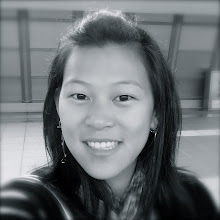I went to look at the collections of Justine Kurland's exhibit at the Nelson Gallery in the Art building. I decided to compare and contrast two of the photos that I felt the most connection with. The two photos, titled Hope or the Suicide Bed (2008) and Heroic Cave Portrait (2008) stood out to me the most.
Hope or the Suicide Bed is a depiction of a tunnel with railroad tracks running through it. It is absent of people, but has evidence of once having someone living there at one time. There are also many miscellaneous items scattered throughout the tracks. I think it is called Hope or the Suicide Bed because there is a feeling of hope coming from the light at the end of the tunnel. At the same time, it is a possible 'suicide bed' because there is a mattress so close to the railroad tracks that the person sleeping on it would die when the train travels past.
The picture Heroic Cave Portrait is a picture of a half-clothed man standing at the opening of a cave in the side of a mountain. In the background, the skies look bright and clear, and there are many green plants. The man is standing in a heroic pose, with his hand touching one side of the rock wall. It gives off the impression of a man appearing victorious from a battle.
The pictures are similar because they both tell stories. The titles also help the observer to create a clear impression from the pictures. Just from looking at them, I was able to understand what I felt the artist was trying to portray in taking those photos. They were different because they used different means to show stories to the observer. The first photo, Hope or the Suicide Bed, used a picture without people in it to present a story. It used only the items that were present in the photo, and the light at the end of the tunnel to present the feeling of 'hope' and the idea of a 'suicide bed'. On the other hand, Heroic Cave Portrait was able to tell a story by using the man to present the story. The way the man was standing at the opening of the cave, and the light at the opening presented the idea of 'heroism'.
Connor Surdi Business Cards
12 years ago






